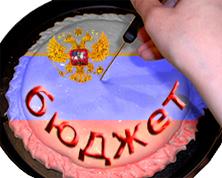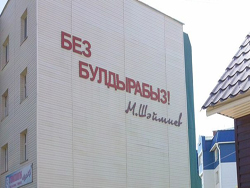
Budget constraints of the Ministry of Finance, which he introduced for highly subsidized regions, did not work, found by the chamber. The state apparatus continue to swell, their incomes decline several times faster than costs, and more than 77% depend on income from other budgets.
The dependence at 77 percent
Eight of the most dependent regions in Russia is not increase the effectiveness of their budgets, even after the conclusion of appropriate agreements with the Ministry of Finance, enters into the chamber in the report on the audit for 2015. As a result, the income of their budgets, these regions more than 77% consist of receipts from other budgets.
In 2014, Russia had set the new budget constraints for the regions as a condition of providing them with financial assistance from the Federal budget. Starting in 2015, these limits also became dependent on the share of grants in own revenues of a particular subject. In the list of heavily subsidized, that is, those in which income subsidies from the Federal budget exceeded 40% (for two of the last three years), includes eight regions: Altai, Dagestan, Ingushetia, Chechnya, Tuva, Kamchatka Krai, as well as Crimea and Sevastopol.
An additional constraint for these regions the law is the implementation of the agreement with the Ministry of Finance on special measures for improving the efficiency of budget expenditures and increasing tax revenues.
In fact, it does not work, says audit office: the Republic of Tyva and Ingushetia exceed the maximum size of the budget deficit (15% of the total approved annual budget of the region) and can not provide the replacement costs for housing. This problem is also observed in Dagestan.
All the regions are heavily subsidized vehicles: the number of employees of state institutions and authorities is increased, as a result, the maximum expenses for wages of civil servants has been exceeded. The reasons why this happened, the Ministry of Finance has not reviewed, says the report of the accounting chamber.
In General, violations of the agreements demonstrate poor discipline from the regions, and weak supervision by the Federal Ministry, is the same.
“In 2013-2015 budget revenues are highly subsidized regions on average, 77.6 per cent was generated through grant income (grants, subsidies and subventions. — “Газета.Ru”), indicating their continued high dependence on financial aid from the Federal budget”, — the document says. The Finance Ministry did not answer questions “Газеты.Ru” at the moment of release notes.
“I think this is largely a consequence of the General ineffectiveness” — the analyst of the Economic expert group (EEG) Alexander Suslin. In simple ways, such as tariff increases, will not solve the problem, she notes: “In poor regions, where the standard of living close to poverty, a simple increase in tariffs will not solve the problem, you need to create in the region an attractive investment conditions.”
The regions with the ever-outstretched hand
A list of the most subsidized regions from year to year does not undergo significant changes. More than two years ago, in mid-2014, the chamber consisted of seven such subjects. Since then, the list was supplemented with the Crimea and Sevastopol, and disappeared from it during this time only one region, Karachay-Cherkessia.
The total volume of gratuitous receipts in budgets increased from 196.9 billion rubles on January 1, 2014 until 329,7 billion rubles on January 1, 2015, or 67.5%, estimated by the auditors. However, by 1 January 2016 it fell by 12% and amounted to 290,2 billion.
The efficiency improvement for all not an easy task, and for the most dependent regions in particular: they used to take a passive stance, says Suslina from EEG. The audit chamber report contains a list of possible areas of work for governors.
One of the reserves to Supplement the income of these regions is the legalisation of “grey” employment. According to Rosstat, the share of employment in the informal sector in these regions is almost twice the average for Russia: 47.9 per cent against 20.5 per cent.
Reserves of revenues from the legalization of these workers are from of 102.3 million rubles in the Republic of Tuva to 900 million rubles in Chechnya, estimated by the chamber. And in the Crimea, this amount is 1.5 billion rubles.
Another possible direction for improving the income of highly subsidised regions to attract investments. “However, the example of highly subsidised regions, are part of the North Caucasus Federal district, it should be noted that an integrated system of attracting investments is created”, — says the Agency. Of the 26 approved priority of “anchor” investment projects in agriculture and industry were implemented only six.
Contracts entered into with the regions, the Ministry of Finance, reasonable and rational: the Ministry requires regions to reduce the costs, but the “higher of these treaties has a different system of decision-making”, says the Director of the regional program of Independent Institute for social policy Natalya Zubarevich.
“It is absolutely clear that these agreements — large Convention. Because when they are broken and the Finance Ministry is trying to do something, the head of the region goes to the White house or the Kremlin, explains how it all problematic, then call and speak to give additional budget credits,” she said.
Therefore, while the governors still have the opportunity to address issues at other levels of government, the requirements of the Ministry of Finance will remain a Board, not a guide to action, I’m sure Zubarevich.
She recalled that the Chechen Republic in the first half of added transfers 14% in the overall decrease of 12%. “If Chechnya is added transfers — why does she have to optimize costs?” — asks the expert.








